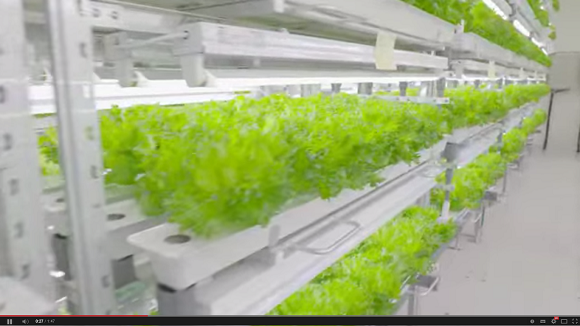
With Vermont becoming the first state in the US to require labels for genetically modified organisms, more and more people are turning towards natural, organically grown food. People want to know where their food comes from and they want to have the choice to choose foods that don’t use pesticides. But genetically modified food has been paramount to feeding every mouth on this planet. What if there was a way to combine the benefits that science provides but still ensure a natural growing environment with no pesticides used? Fujitsu is taking great strides towards that goal and their first product has been making its way to consumers.
And yes, we really are taking about food by Fujitsu.
Fujitsu is better known for its electronics and appliances, but when the unique opportunity of an empty 2,000 square meter clean room presented itself, Fujitsu decided to produce something new that they had been researching…produce! With the unique environment of a clean room, Fujitsu installed growing lights and irrigation to create a one of a kind high-tech agriculture facility.
Fujitsu teamed up with Aizufujikako and the Fukushima Medical University to grow low-potassium, pesticide free, low bacteria and low-nitrate nitrogen vegetables. Low-potassium vegetables that can be eaten raw are incredibly useful for the dietary needs of people with kidney disease, which affects over 15 million people in Japan. Nitrate-Nitrogen (what causes the bitter taste) is also considerably reduced and the natural sweet flavor of the lettuce is brought to the surface. This makes the lettuce extremely easy to eat.
Daily output is expected to be 3,500 heads of lettuce when in full production. Cultivated in a clean room, the vegetables carry few bacteria and therefore have a longer shelf life (up to two weeks). Although the price is expected to be three to four times higher than a normal head of lettuce, main customers will include hospitals and department stores in and outside of Fukushima.
This lettuce is the first of its kind produced by Fujitsu working under the Akisai Cloud Service. A program started in July 2012, it applies IT technology to food production. Fujitsu hopes to continue producing these superior vegetables with the help of Aizufujikako and Akita Prefectural University. The 2013 advanced agricultural production system is one of many initiatives supporting the recovery of the Tohoku region after the Great East Japan Earthquake of 2011. As production continues to rise and new crops are produced, Fujitsu will require the technical and agricultural know-how of those who might not have a farm themselves anymore.
Annual sales are targeted at 150 million yen (about $1.5 million) in 2014, and rising to 400 million yen (about $4 million) in 2016. Here’s to hoping Fujitsu can successfully produce different types of low-potassium vegetables for the people suffering from kidney disease, and for the people of Fukushima.
▼”The clean room drastically reduces bacteria and dust.”
▼”The temperature, level of humidity, concentration of CO2, air flow, light levels, and nutrients are all directly managed.”
▼”The cultivation environment can be controlled from anywhere using a tablet.”
Source: NariNari
Additional Information: METI Aizufujikako, Fukushima Minpo News, semiconportal
Images: YouTube (FUJITSU Japan)

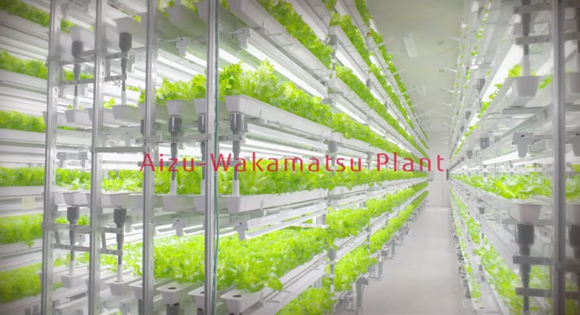
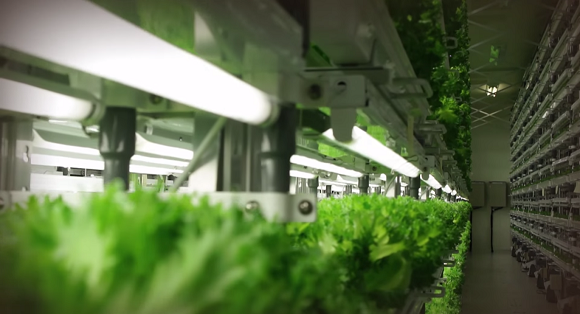
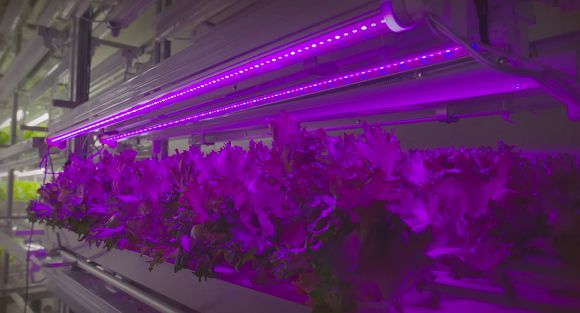
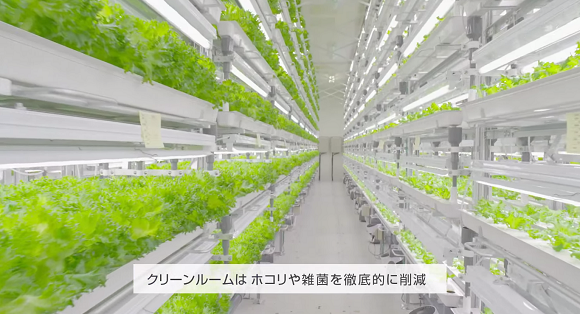
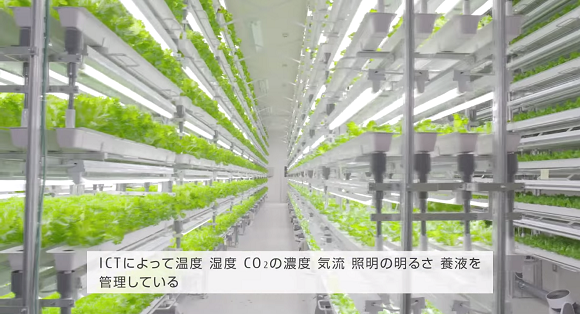
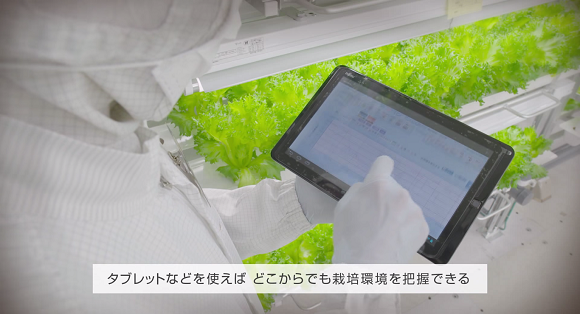
 Tokyo Metro has a new request, “Eat our vegetables!”
Tokyo Metro has a new request, “Eat our vegetables!” LED plant factories offer efficient 3D alternative to traditional gardening
LED plant factories offer efficient 3D alternative to traditional gardening More than two years on, many in Japan still uncertain about food from around Fukushima
More than two years on, many in Japan still uncertain about food from around Fukushima What did Shibuya really look like after the crowds on New Year’s Day?
What did Shibuya really look like after the crowds on New Year’s Day? Cup Noodle tries an authentic Jiro-style ramen, but something’s not quite right
Cup Noodle tries an authentic Jiro-style ramen, but something’s not quite right We revisited Sweets Paradise after a decade to see if Japan’s dessert buffet still delivers
We revisited Sweets Paradise after a decade to see if Japan’s dessert buffet still delivers Survey finds more than 70 percent of Japanese children have an online friend
Survey finds more than 70 percent of Japanese children have an online friend Tokyo day-trip hot springs: Beautiful Mt. Fuji-view bath is just one highway bus stop from Shibuya
Tokyo day-trip hot springs: Beautiful Mt. Fuji-view bath is just one highway bus stop from Shibuya 7-Eleven Japan starts new temporary luggage storage service in over 300 branches
7-Eleven Japan starts new temporary luggage storage service in over 300 branches That time Seiji called JASRAC to ask why he didn’t get paid royalties for his song being on TV
That time Seiji called JASRAC to ask why he didn’t get paid royalties for his song being on TV We try out Nissin’s new Cup Noodle Broth Hardening Powder to see if it really works
We try out Nissin’s new Cup Noodle Broth Hardening Powder to see if it really works One Piece’s Luffy spent years of manga’s publication without saying a word to one of his nakama
One Piece’s Luffy spent years of manga’s publication without saying a word to one of his nakama Starbucks Japan unveils new Sakura Frappuccino for cherry blossom season 2025
Starbucks Japan unveils new Sakura Frappuccino for cherry blossom season 2025 Starbucks Japan ready to get Year of the Horse started with adorable drinkware and plushies【Pics】
Starbucks Japan ready to get Year of the Horse started with adorable drinkware and plushies【Pics】 7 great places to see Mt. Fuji from without having to climb it
7 great places to see Mt. Fuji from without having to climb it Cyberpunk anime meets traditional culture in Ghost in the Shell gold leaf Japanese changing screens
Cyberpunk anime meets traditional culture in Ghost in the Shell gold leaf Japanese changing screens Hayao Miyazaki says Happy New Year to Studio Ghibli fans with new art for Year of the Horse
Hayao Miyazaki says Happy New Year to Studio Ghibli fans with new art for Year of the Horse Hello Kitty Choco Egg figures are an adorable trip through three periods of Japanese pop culture【Pics】
Hello Kitty Choco Egg figures are an adorable trip through three periods of Japanese pop culture【Pics】 We found possibly the quietest Japanese-style hotel in Tokyo’s bustling Shinjuku district
We found possibly the quietest Japanese-style hotel in Tokyo’s bustling Shinjuku district 7-Eleven Japan’s ramen-cooking robot whipped us up a bowl of noodles【Taste test】
7-Eleven Japan’s ramen-cooking robot whipped us up a bowl of noodles【Taste test】 Sumo Sanrio! Hello Kitty and pals team up with Japan Sumo Association for new merch【Pics】
Sumo Sanrio! Hello Kitty and pals team up with Japan Sumo Association for new merch【Pics】 Japan’s oldest largetooth sawfish in captivity back on display in Mie Prefecture
Japan’s oldest largetooth sawfish in captivity back on display in Mie Prefecture More Than a Capsule Stay: Why Solo Travelers Choose “global cabin Yokohama Chinatown”
More Than a Capsule Stay: Why Solo Travelers Choose “global cabin Yokohama Chinatown” Disillusionment at Tsukiji’s tourist-target prices led us to a great ramen restaurant in Tokyo
Disillusionment at Tsukiji’s tourist-target prices led us to a great ramen restaurant in Tokyo Starbucks teams up with 166-year-old Kyoto doll maker for Year of the Horse decorations【Photos】
Starbucks teams up with 166-year-old Kyoto doll maker for Year of the Horse decorations【Photos】 Tokyo considering law requiring more trash cans following litter increase in heavily touristed area
Tokyo considering law requiring more trash cans following litter increase in heavily touristed area Tokyo’s Tsukiji sushi neighborhood asks tour groups to stay away for the rest of the month
Tokyo’s Tsukiji sushi neighborhood asks tour groups to stay away for the rest of the month Tokyo event lets you travel back in time, for free, to celebrate 100 years since Showa era start
Tokyo event lets you travel back in time, for free, to celebrate 100 years since Showa era start Sanrio theme park in Japan announces plans to expand into a Sanrio resort
Sanrio theme park in Japan announces plans to expand into a Sanrio resort Japan may add Japanese language proficiency, lifestyle classes to permanent foreign resident requirements
Japan may add Japanese language proficiency, lifestyle classes to permanent foreign resident requirements Stamina-destroying “Paralysis Noodles” are Tokyo’s newest over-the-top ramen innovation
Stamina-destroying “Paralysis Noodles” are Tokyo’s newest over-the-top ramen innovation Survey asks foreign tourists what bothered them in Japan, more than half gave same answer
Survey asks foreign tourists what bothered them in Japan, more than half gave same answer Japan’s human washing machines will go on sale to general public, demos to be held in Tokyo
Japan’s human washing machines will go on sale to general public, demos to be held in Tokyo Japan’s deadliest food claims more victims, but why do people keep eating it for New Year’s?
Japan’s deadliest food claims more victims, but why do people keep eating it for New Year’s? We deeply regret going into this tunnel on our walk in the mountains of Japan
We deeply regret going into this tunnel on our walk in the mountains of Japan Studio Ghibli releases Kodama forest spirits from Princess Mononoke to light up your home
Studio Ghibli releases Kodama forest spirits from Princess Mononoke to light up your home Major Japanese hotel chain says reservations via overseas booking sites may not be valid
Major Japanese hotel chain says reservations via overseas booking sites may not be valid Put sesame oil in your coffee? Japanese maker says it’s the best way to start your day【Taste test】
Put sesame oil in your coffee? Japanese maker says it’s the best way to start your day【Taste test】 No more using real katana for tourism activities, Japan’s National Police Agency says
No more using real katana for tourism activities, Japan’s National Police Agency says Starbucks Japan reveals new sakura drinkware collection, inspired by evening cherry blossoms
Starbucks Japan reveals new sakura drinkware collection, inspired by evening cherry blossoms Updated cherry blossom forecast shows extra-long sakura season for Japan this year
Updated cherry blossom forecast shows extra-long sakura season for Japan this year
Leave a Reply